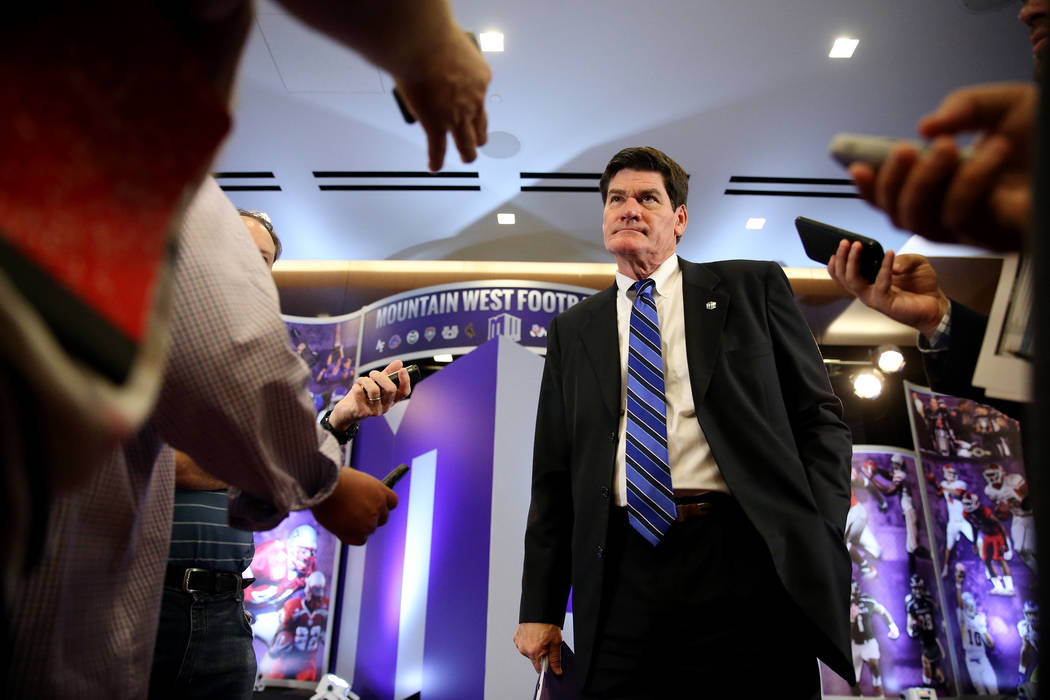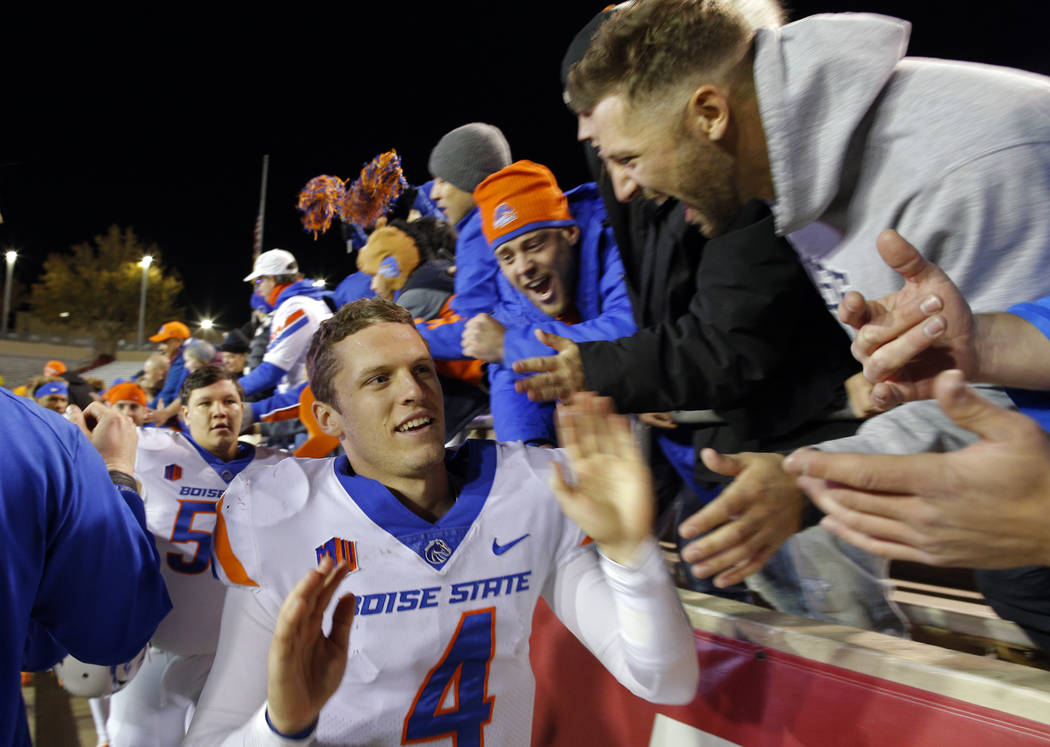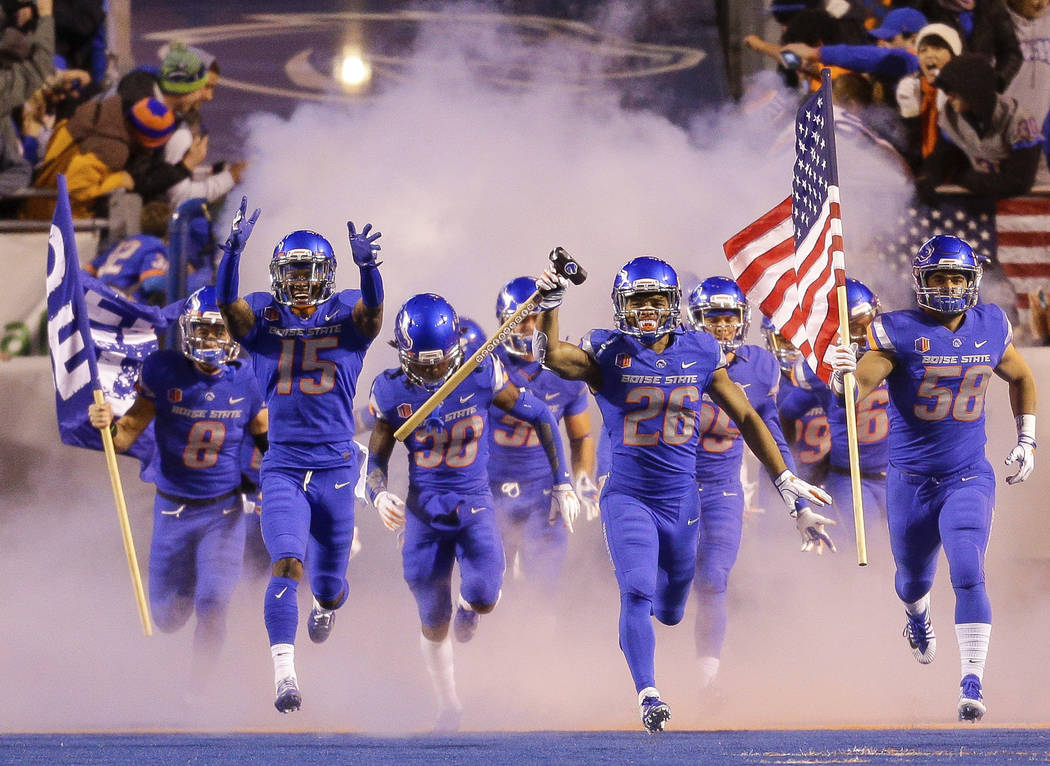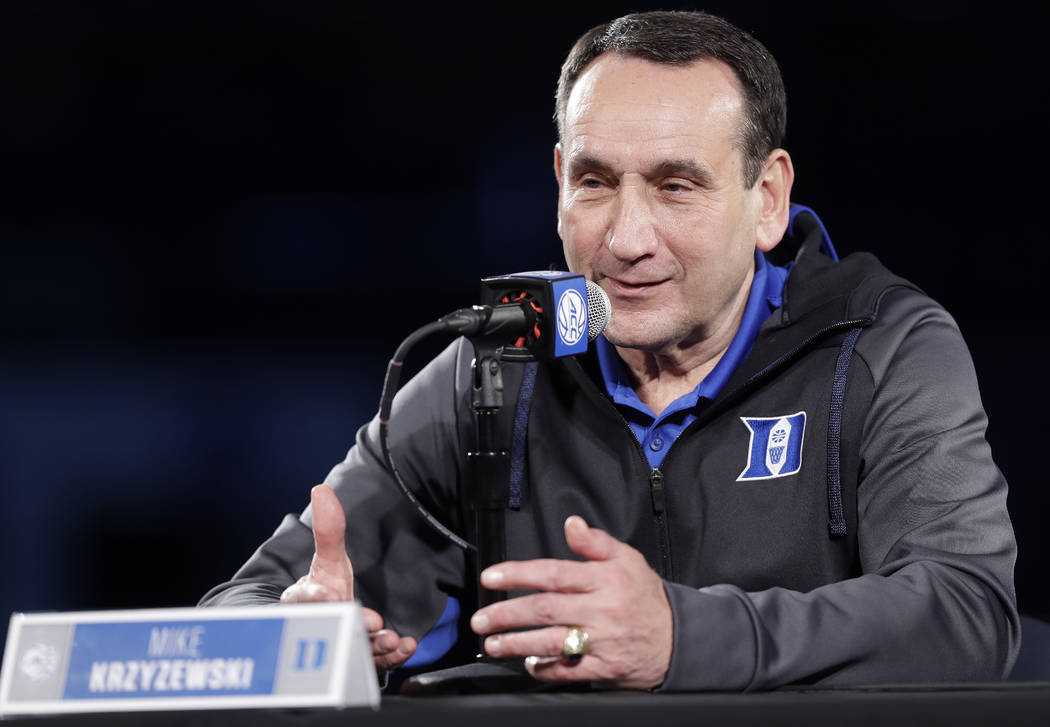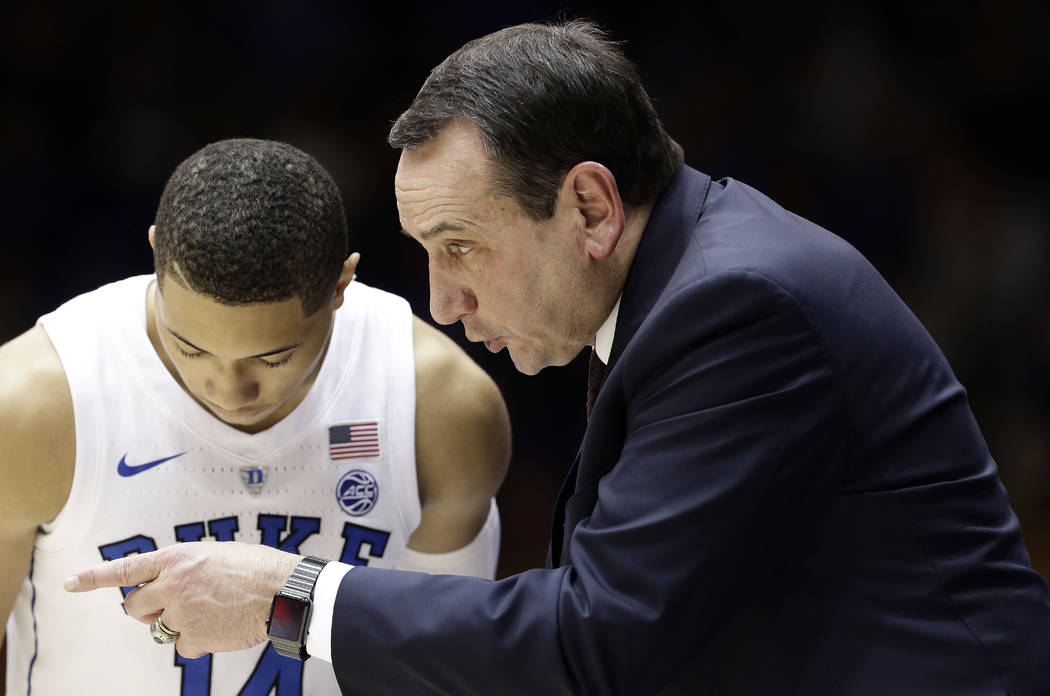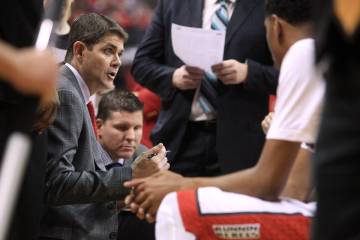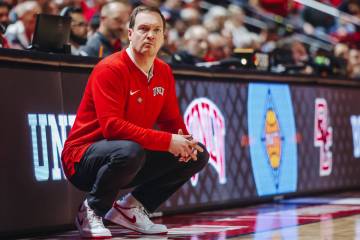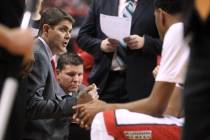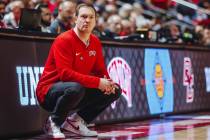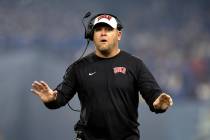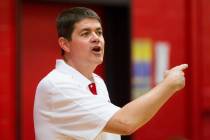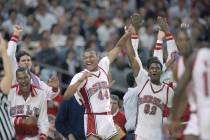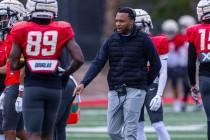Rebels in Ruins: Most of the power, money in Power 5 conferences
When Karl Benson announced in August that he would step down June 30 as the Sun Belt Conference commissioner, the news release touted that he had increased revenue distribution to member schools by 2,000 percent.
It’s a pretty startling number, until you realize the conference is providing each of its nine schools with about $1 million through TV rights and other sources.
That’s the same amount of money a Power Five conference school would pay UNLV for a one-and-done football trip.
The poorest of the Power Five leagues is the Atlantic Coast Conference, but that’s like being down on your luck in Bel Air. The ACC distributes $26.6 million to each school, and the highest-paying conference is the Southeastern Conference at $40.9 million, according to USA Today.
As part of a five-part series examining UNLV athletics, the Review-Journal looked at the Rebels’ revenue stream, which shows the increasing chasm between the Power Five conferences and the Group of Five conferences — the haves and the have-nots in NCAA Division I college sports.
UNLV’s conference, the Mountain West, pays out about $3 million to each school.
“The money is just insane,” Long Beach State athletic director Andy Fee said. “I forget which athletic director was talking about football and how they have a quality control (coach). I mean, they’re just making up stuff. They’re paying him $150,000 a year, and they’re paying that in the SEC and places where it doesn’t cost a lot to live.
“So how do you compete with that? The Pac-12 schools have a tough time doing it, and we’re not even at that level. So where are we?”
How the separation began
The separation of powers began subtly about 25 years ago as a way to declare a true national football champion, rather than having the polls decide the winner. Or winners, in some cases, with the media poll choosing one team and the coaches’ poll another. Conference bowl tie-ins often meant the top-ranked teams didn’t play each other in the postseason.
Superconferences didn’t exist at the time, though some still stood above the rest, including the SEC, the Big 8 and the Southwest Conference. Some national powers, such as Penn State, even played an independent schedule.
That began to change when the Bowl Coalition was formed in 1992 to increase the chances the top two teams would play each other in the postseason. The Bowl Alliance replaced the Bowl Coalition three years later, with some tweaks to the system, but the aim of pairing the top two teams remained the same.
That gave way to the Bowl Championship Series in 1998.
“We just wanted to give ourselves the best chance to get the top two teams in the country playing for the national championship while also enhancing the interest in the regular season,” said Roy Kramer, the former SEC commissioner who was most responsible for creating the BCS. “The NFL had really taken off in terms of interest, and college football had taken a back seat. We needed to put together something at the end of the season that got us No. 1 against No. 2 as best as that could be determined.”
Finally, the College Football Playoff, a four-team tournament to name a champion, was formed in 2014.
As the postseason kept changing, so did the game’s structure as schools switched conferences in a national game of musical chairs. The Pac-10 became the Pac-12. The ACC, Big Ten and SEC grew to 14 schools each. The Big 12 shrank to 10 members.
Winding up without a seat meant getting stuck outside a power conference. Less power. Less media attention. Less fan interest. And a lot less money.
TV contracts furthered the gap between the Power Five conferences (ACC, Big 12, Big Ten, Pac-12 and SEC) and the Group of Five conferences (Mountain West, American Athletic, Conference USA, Mid-American and Sun Belt). When the big boys threatened to break off from the NCAA and form their own division, the other conferences had no choice four years ago but to cave and make concessions that allowed the top leagues to essentially make up their own rules.
The major conferences now have little reason to want to create their own division.
“They have to play somebody,” said Mountain West commissioner Craig Thompson. “If you get into 20 basketball games and 10 football games, pretty soon you’re not going to have a 12- or 13-0 playing in the (College Football Playoff) or a 28-2 playing for the Final Four. You’re going to have a whole bunch of 15-15 (teams) playing each other, and so there’s a reason we play them, and there’s a reason they play us in both sports.”
He said there was another compelling reason there won’t be a split.
“Let’s go to the state of Michigan,” Thompson said. “You’ve got all kind of legislators that graduated from a public institution, at Eastern, Western, Central. It’s not just Michigan and Michigan State. How are you going to pull away and separate now?”
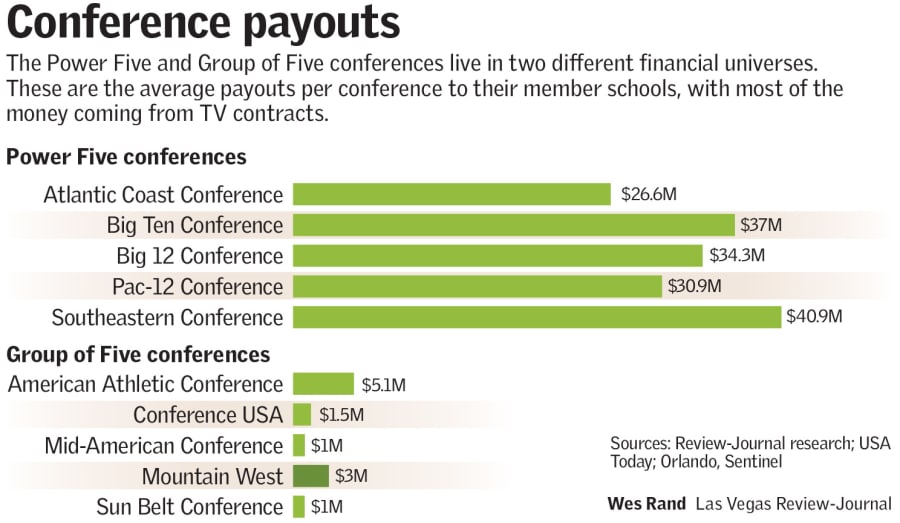
What now?
Schools in Group of Five leagues make no secret of the fact they would bolt to a Power Five conference if offered the chance.
Boise State and San Diego State nearly left the Mountain West six years ago for the Big East Conference, one of the top six leagues at the time. When the Big East began to fall apart and the Power Six became the Power Five, Boise State and San Diego State remained in the Mountain West — which gave Boise State a sweetheart TV deal that pays the Broncos exclusive bonuses.
The problem for Group of Five schools is the Power Fives might not be in any mood to expand.
There are serious questions as to whether the Big Ten truly benefited from adding Maryland and Rutgers and whether the Pac-12 is better off since Colorado and Utah came into the fold. Adding schools meant splitting the money that many more ways without necessarily the benefit of programs that compete on a national level, though the Utes have been respectable.
The Big 12 looked at expansion two years ago and decided against it. Mountain West schools UNLV, Air Force and Colorado State were rebuffed.
“I think there has always been a problem with some schools trying to be something they’re not,” Kramer said. “North Texas is never going to be Texas, as hard as it might try. I think the Power Fives have done a good job trying to distribute some of the revenue back to other schools, and I would hope they do more in the future.
”I don’t think a superconference is on the horizon. I really don’t. Now you could see continued change in membership among some conferences, but not just one big conference.”
That leaves schools such as UNLV in a tough spot.
The money differential might narrow some when the TV deals with major conferences are renegotiated beginning in 2023 because of the trend of viewers cutting cable. If there are fewer subscribers, networks such as ESPN could push hard to reduce the rights fees, but that wouldn’t come close to erasing the financial gap.
Agreeing to a new TV deal won’t be an automatic decision for the Mountain West. Each school makes about $1.1 million via a deal running through 2020 that includes ESPN, CBS Sports and AT&T SportsNet. If the figure remains around there when the deal comes up for negotiation or even decreases, the conference could decide to go to an all-digital format and control start times for its games.
Conference USA went from distributing $1.1 million per team from TV rights to $200,000 two years ago.
Thompson said he would be open to a digital-only arrangement, but at this point it’s only a consideration.
“I’d like to see a combination,” UNLV athletic director Desiree Reed-Francois said. “We need attractive start times, because it’s important our fans can come to our games.
“Resources, of course, are very important, and I’m really looking forward to the Mountain West continuing to be an innovative leader in this space without sacrificing the opportunity to showcase our institution, the community and the student-athlete achievement.”
More Rebels: Follow at reviewjournal.com/Rebels and @RJ_Sports on Twitter.
Review-Journal sports columnist Ed Graney contributed to this report. Contact Mark Anderson at manderson@reviewjournal.com. Follow @markanderson65 on Twitter.
REBELS IN RUIN
Go back to Part 2 of the series.
Read Part 4 of the series in Thursday's print edition and online at 6 a.m.



